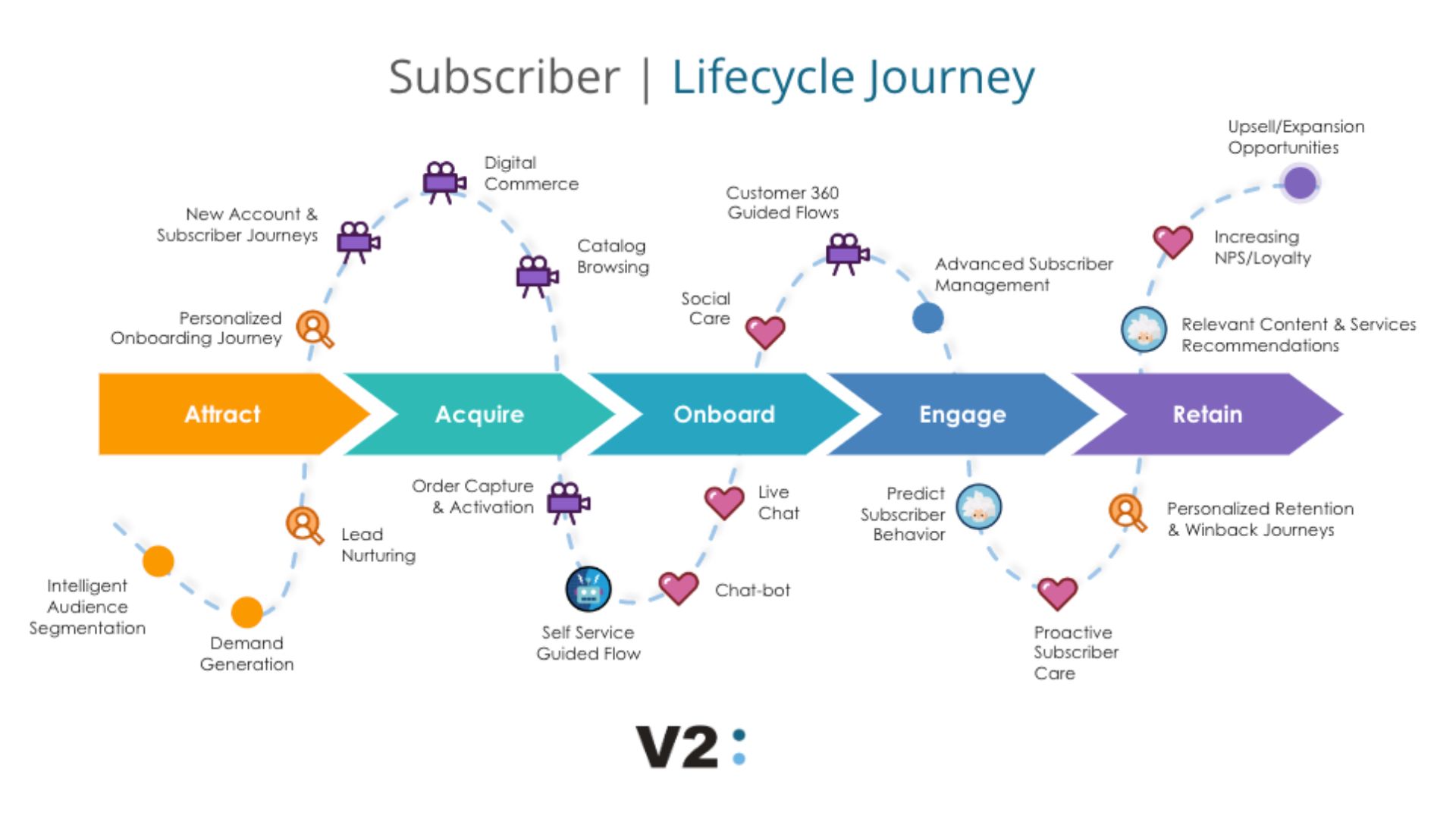Of the many changes companies faced in 2020, one of the most enduring has been the move to subscription-based services. While this business model—a recurring fee for a product or service—is not new, we see widespread adoption across a broader range of industries than ever before. In fact, The Washington Post cited research from UBS, a financial services firm, in 2021 predicting that “the ‘subscription economy will grow to $1.5 trillion by 2025, more than double the $650 billion it’s estimated to be worth now.â€
Today, many consumers subscribe to multiple media platforms, selecting a mix of publishers, streaming services, and specialized media representing their diverse interests. Even within one subscription, audiences expect to customize the mix of topics and content they receive. Some may subscribe to support The New York Times journalism, while others may simply want access to NYT Cooking or Games.
Subscription models also benefit forward-thinking retailers. For example, Walmart+ is the next iteration of the successful membership model made popular by retailers like Costco, allowing customers to receive perks and benefits while shopping online and in-store. Direct-to-consumer brands also offer subscription services, from clothing to personal care supplies to online programs and in-app services, ensuring customers have the latest offerings or a product refill right on schedule.
The Risks and Benefits of Subscription Business Models
One of the primary reasons companies adopt this model is that it provides more predictable cash flow, particularly in unpredictable economic environments. Subscriptions also provide better data on what sells, what pricing strategies are most effective, and help companies manage inventory. Perhaps most importantly, subscriptions are relationship-driven, creating recurring touch points with customers. The ultimate goal is that this results in long-term customer loyalty and a higher customer lifetime value.
With these benefits also come high expectations, particularly given the increased competition in the market. Consumers expect fresh content, personalization, ease, simplicity, and on-demand support. Without these, the churn risk increases, leaving companies with a leaky bucket. While the low commitment of a monthly subscription makes it easy for users to sign up, it also makes it easy for them to walk away.
This is where Salesforce’s Media Cloud – Subscriber Lifecycle Management (SLM) comes in.
What is Subscriber Lifecycle Management?
The subscription lifecycle encompasses each step in a customer’s journey as a subscriber, from sign-up to onboarding, billing, ongoing product use and subscription changes (i.e. upgrading, renewing, pausing, cancelling). At V2, we divide this into five stages, which we’ll cover in more detail below: Attract, Acquire, Onboard, Engage, and Retain.

A subscription management tool, like Salesforce’s Subscriber Lifecycle Management, allows you to manage and optimize each stage of the user journey, automating critical customer touchpoints, allows you to generate reports to evaluate how your content or services are performing, and offer that user 24/7 customer support.
But an effective subscription business requires much more than recurring billing and payments. Successful companies must delight the customer across the entire subscription lifecycle. Let’s dive into each one.
The Five Stages of Subscriber Lifecycle Management
1. Attract
The journey begins with cost-effectively attracting and converting new subscribers. Subscriber Lifecycle Management allows your sales and marketing teams to reach customers wherever they are via multi-touch campaigns. They can build complete customer profiles and apply better audience segmentation as prospects begin to engage with promotions and utilize Salesforce’s predictive algorithm to identify “next best offers†to move prospects down the funnel.
2. Acquire
When it’s time to convert a casual browser into a subscriber, your sales teams should be able to offer custom bundles, flexible pricing options, and free trials or other discounts. Subscriber Lifecycle Management allows them to easily create and offer these promotions and see which ones best convert.
3. Onboard
Onboarding is a critical component of the process. When done right, it opens the door to a long-term relationship and sets the tone for the entire product experience. It should be streamlined and optimized for any device so you can gather important details and preferences to better tailor each customer’s experience. Offer omnichannel support along the way, whether in the form of bots, social media, chat, phone, email, knowledge articles, or community forums.
4. Engage
Once you have built a customer’s profile, you can then personalize the experience, make proactive recommendations, and guide customers to relevant products. If a customer falls into a particular audience cohort, you can automate notifications or highlight certain content based on historical insights and predictive analytics. For example, sports fans, send push notifications when a game starts or highlight relevant documentaries on top players. Every time a customer opens your product experience, it should be customized based on their viewing or engagement patterns. They should be able to pause streaming on one device and begin it seamlessly from another.
5. Retain
The ultimate goal is long-term commitment from loyal subscribers. Create a sticky product experience and delight your customers with a frictionless, customizable experience, automated touch-points at important milestones (renewal reminders, birthday promotions), fresh content, and on-demand support. All of this allows you to measurably minimize all types of churn.
Beyond retention, a subscription management tool allows you to expand the business as well, by up-selling, cross-selling, launching new content or products, and evaluating audience engagement data to optimize and identify revenue-enhancing changes. All of these components are part of an effective subscription management tool.
Salesforce Subscriber Lifecycle Management
Subscriber Lifecycle Management is one solution that is available for Salesforce Media Cloud, along with Advertising Sales Management (ASM), built upon Media Cloud’s industry specific data model. It was created to natively support large enterprise media organizations, incorporating and solving for the complex relationships and products that exist within the media space. This makes it easier for media companies interested in rolling out a new subscription offering (or improving an existing one) to do so without having to worry about a heavy lift, and also the recurring ongoing maintenance of that system.
If this type of solution sounds interesting, or if subscription management is something that your team is considering, reach out to one of our strategic advisors to see how Subscriber Lifecycle Management could benefit your company. We’ve built many custom solutions and managed highly complex integrations for hundreds of companies over the past 17+ years, so we know how to make Salesforce’s comprehensive suite of products work best for your needs. With the right tools and systems in place, you’ll be well positioned to turn casual customers into long-term subscribers.
Building Trust Starts With A Conversation.
Contact us to book a free 15-minute consultation today.


